When I visited Mallorca, I pretty much ate my weight in these flaky ensaimadas. With this easy recipe, you can recreate this Spanish treat at home!
If you're looking for more tempting Spanish desserts, make sure to try my recipes for gateau Basque, tarta de Santiago (Spanish almond cake), and crema catalana.
Introduction
Ensaimada (or ensaymada) is a traditional sweet pastry from Mallorca, and has become a beloved breakfast or afternoon snack for visitors to this sunny Balearic island. Its distinctive coiled shape and heavy dusting of powdered sugar give it a beautifully unique appearance.
Saim, the Mallorquin word for pork fat, is hidden in the name, and is connected to the Arabic word shahim. Not surprisingly, pork lard plays a significant role in the traditional recipe. This reflects the practices of Spaniards during the Spanish Inquisition, who ate pork products to demonstrate their Catholic beliefs.
Ingredients

Wondering what you need to make a batch of these ensaimadas? Let's talk about the key ingredients!
- Flour: You'll want to use bread flour in this recipe. The higher protein content will create more gluten in the dough, giving the ensaimadas a fluffier, chewier texture.
- Yeast: This is what gives the ensaimadas their rise and flavor! Use either active dry or instant yeast, and make sure it's not expired.
- Butter: This is the more modern (and slightly healthier) alternative to the traditional choice of pork lard.
See recipe card for full information on ingredients and quantities.
Variations
- Lard vs. Butter: Want to make it traditionally? Swap the butter for an equal weight of pork lard.
- Vegetarian: Use either vegetable shortening for a texture similar to that of lard, or use butter.
- Different Fillings: Try pastry cream, pumpkin jam, or nougat.
How to Make Ensaimadas
If you’d like to see the full ingredients and instructions, scroll to the bottom of the post for the printable recipe card.
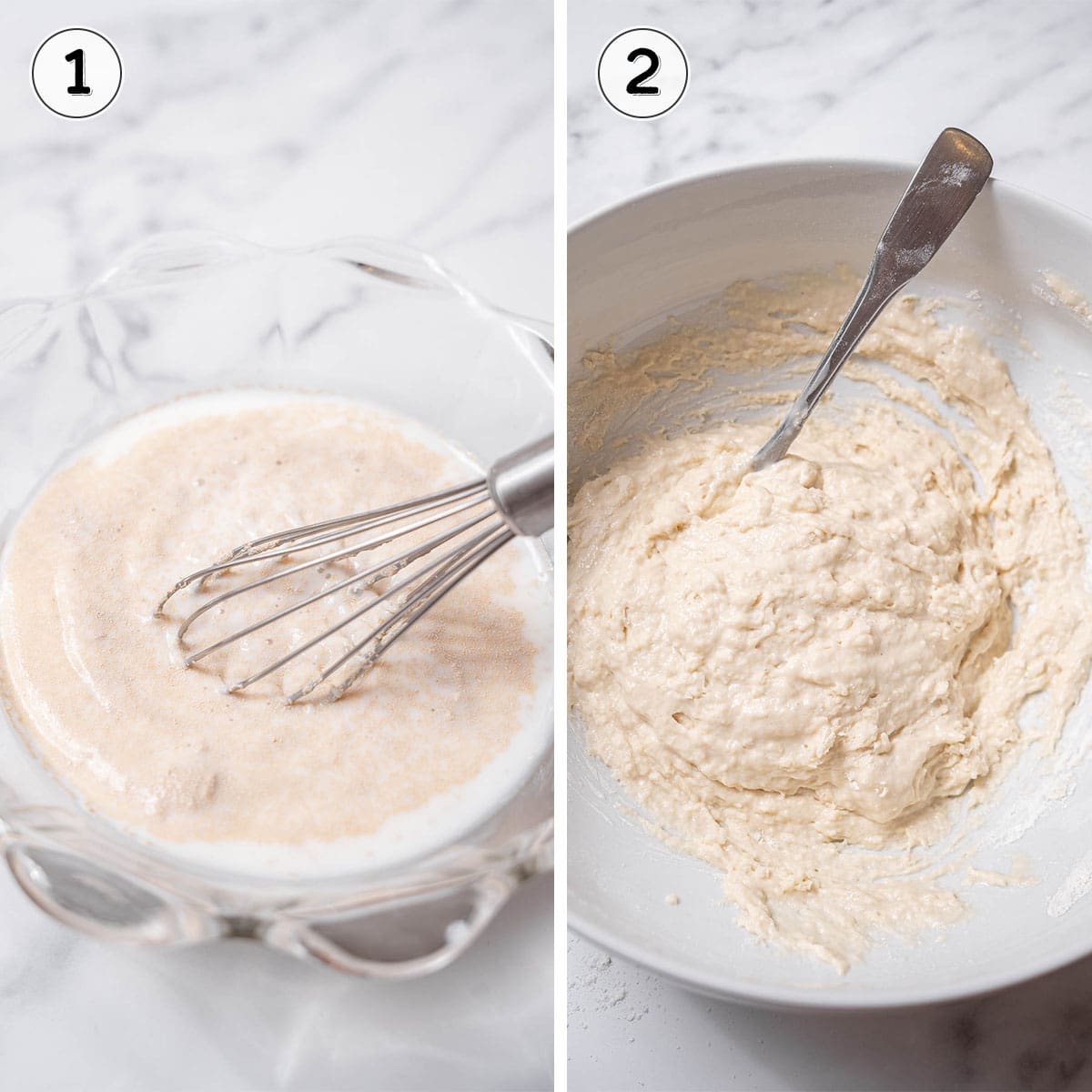
- Whisk the yeast, milk, and one teaspoon of sugar together until combined, then let it stand until foamy, about 5-10 minutes. (image 1)
- Pour half of the flour into a bowl and make a well in the center. Mix in the foamy yeast mixture and mix to form a shaggy dough. (image 2)
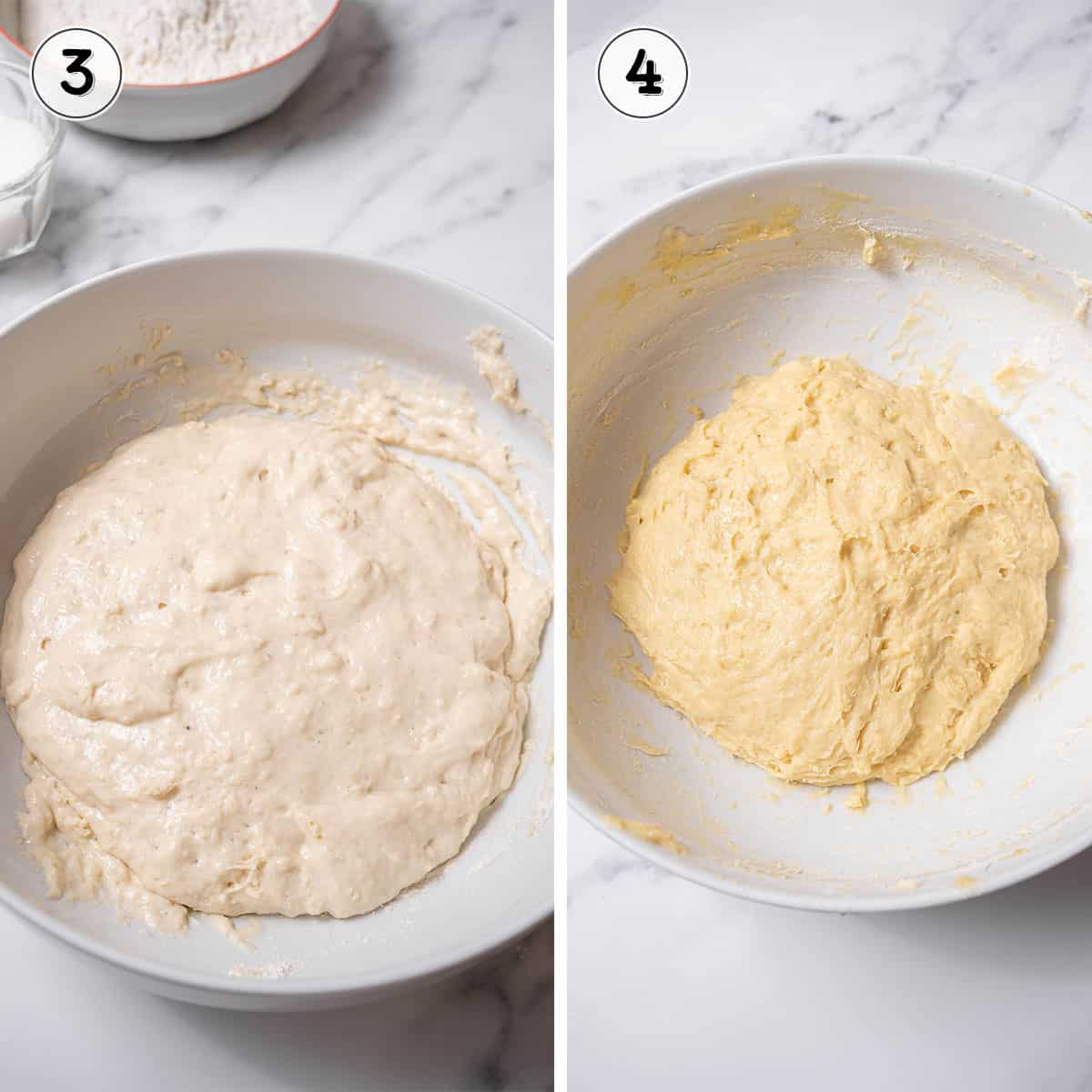
- Knead until the dough is smooth and stretchy, about 5 minutes. Cover and leave the dough to rise in a warm place until it's doubled in size, about 1 hour. (image 3)
- Punch down the dough, then incorporate the eggs, sugar, and remaining flour. (image 4)
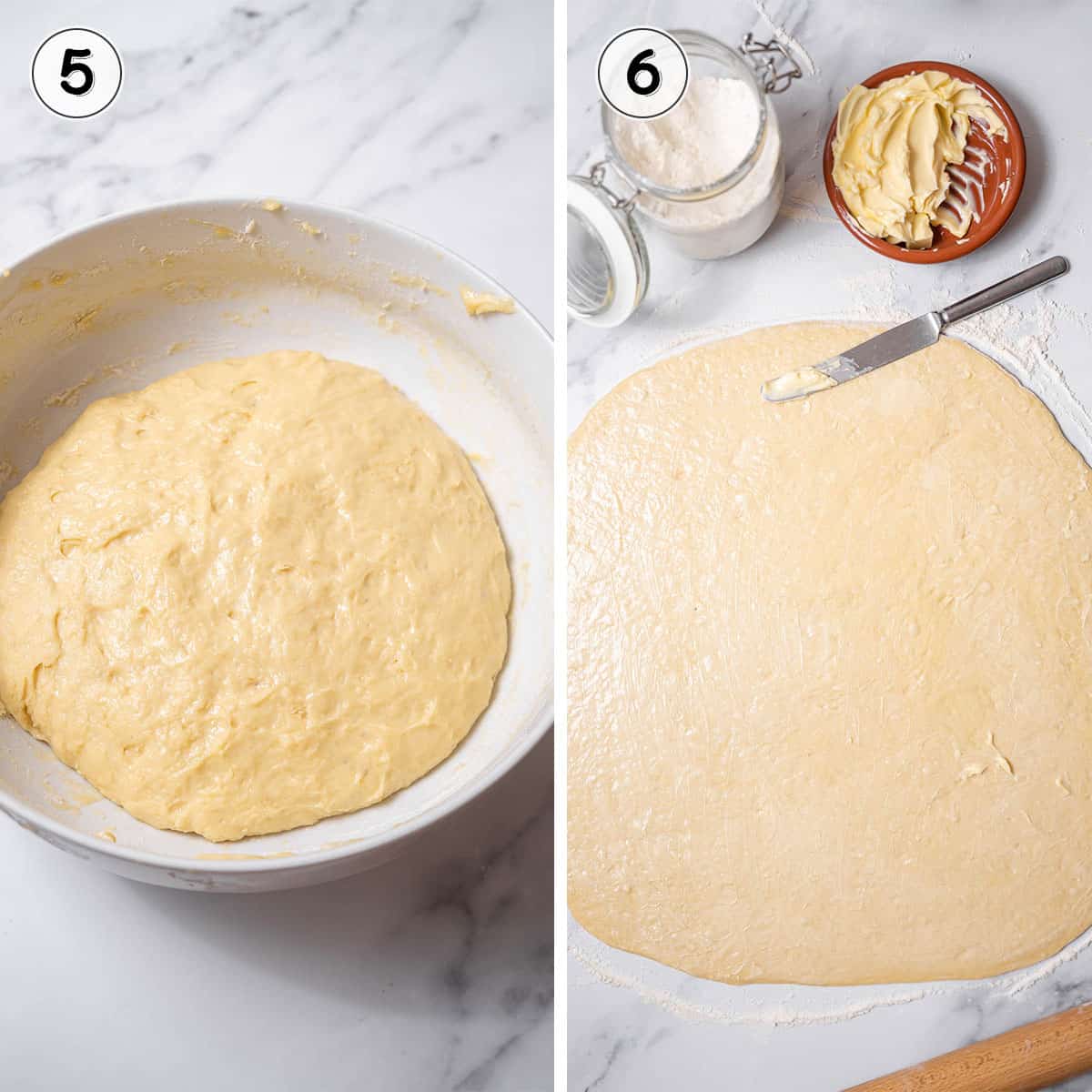
- Cover the dough again and let it rise until it's nearly doubled, about 30-45 minutes. (image 5)
- Roll out the dough into an 18 inch square and spread with softened butter. (image 6)
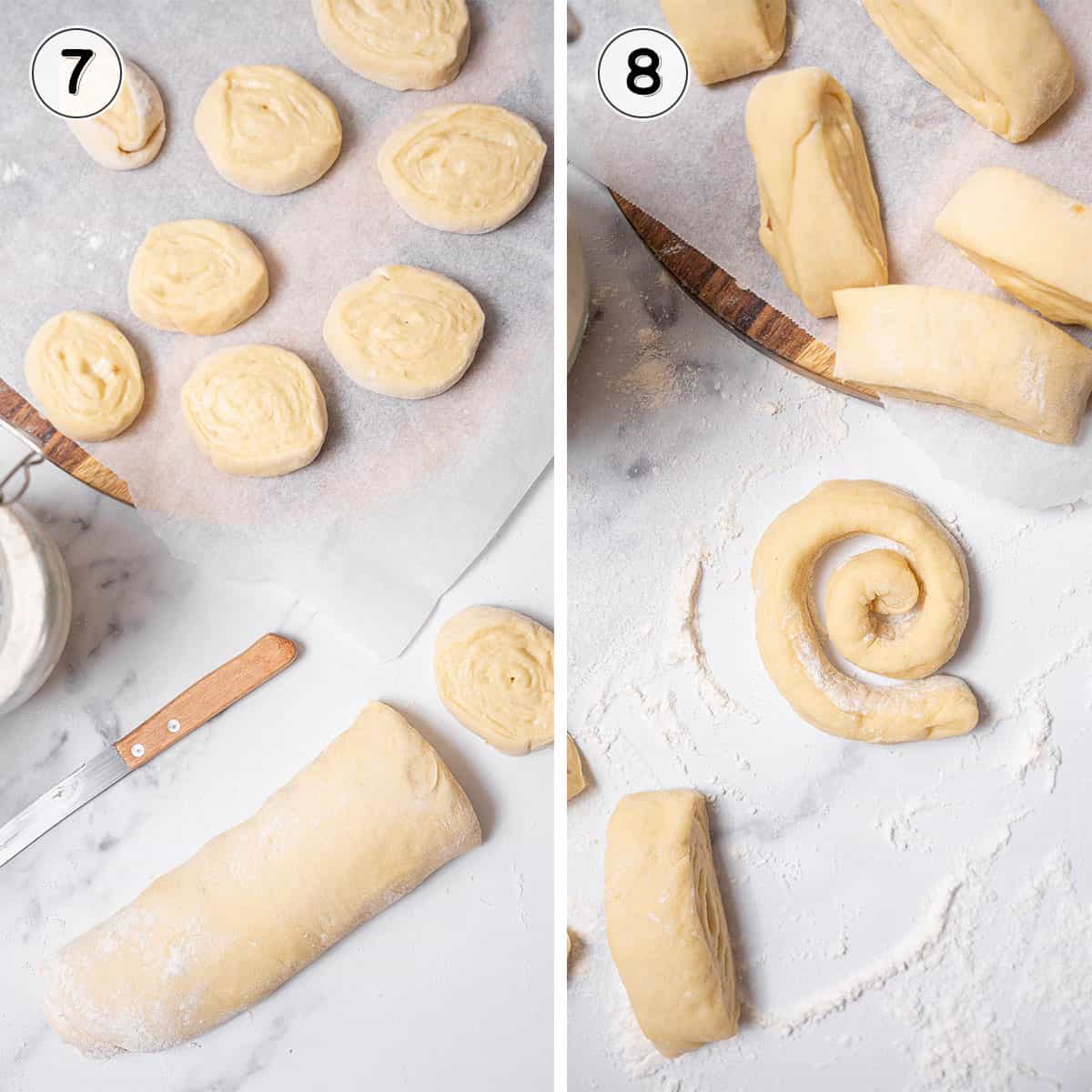
- Roll up the dough from the bottom of the square and cut into 1-inch slices. (image 7)
- Roll each circle of dough into a rope, then coil it into the traditional snail shape. (image 8)
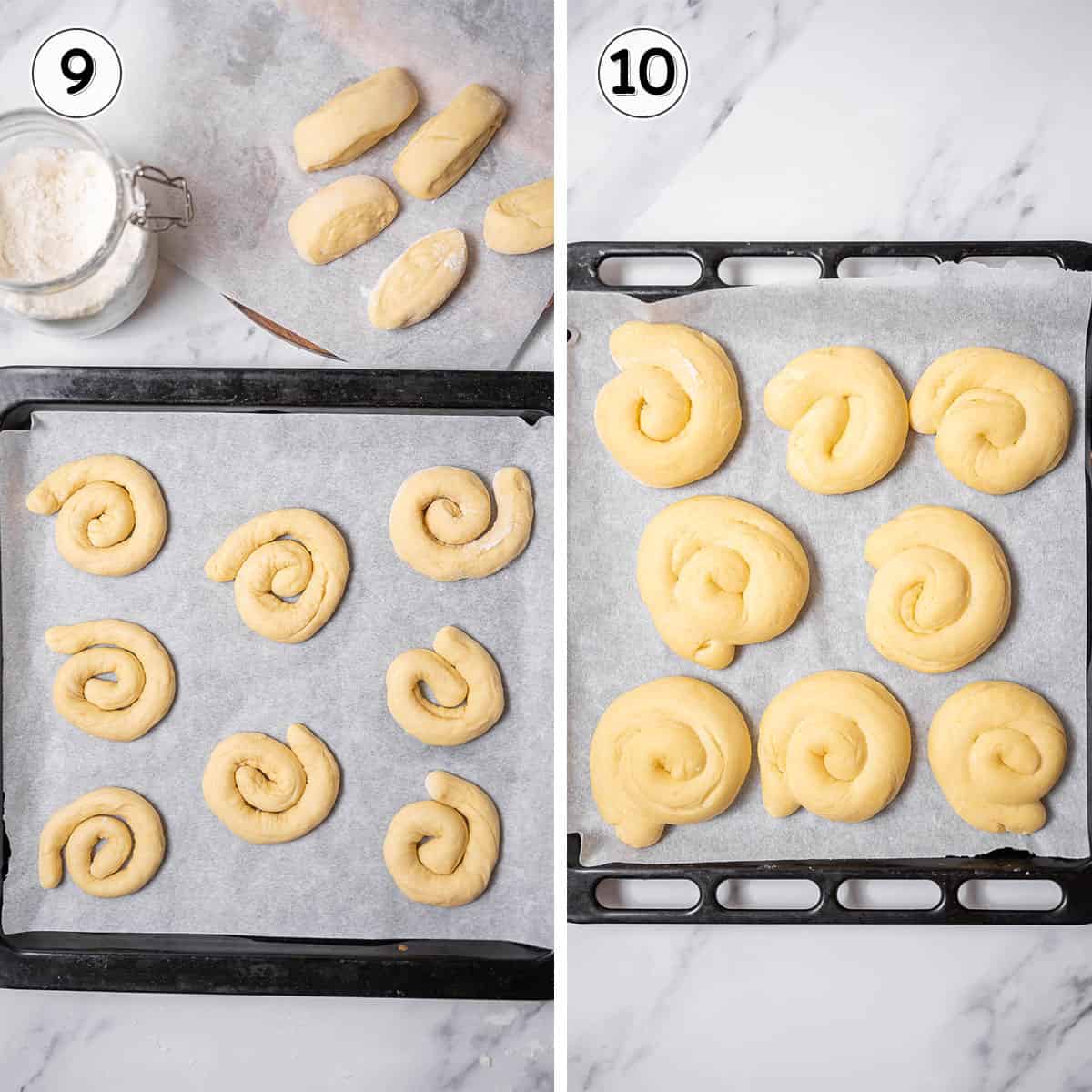
- Place all the ensaimadas on a parchment-lined cookie sheet. (image 9)
- Cover with a tea towel or plastic wrap and let the ensaimadas rise until doubled in size, about 3-8 hours. (image 10)
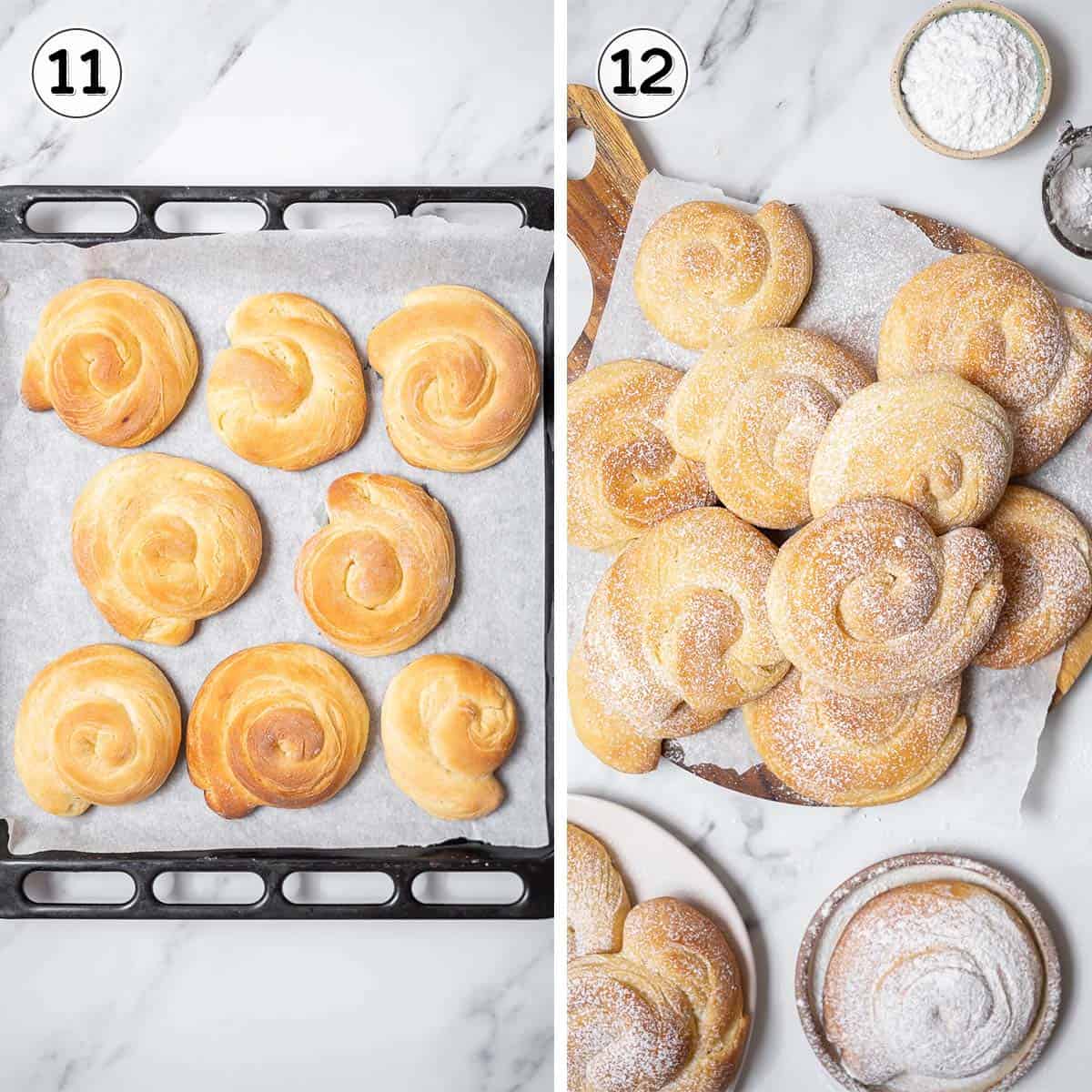
- Bake at 350°F (180°C) until golden, about 12-15 minutes. (image 11)
- Cool for at least 20 minutes, then dust with powdered sugar and enjoy! (image 12)
Recipe FAQs
These ensaimadas are Mallorca's best known dessert! Their distinctive snail shape and flaky, buttery texture make them a memorable treat.
Traditional ensaimadas have a delightfully flaky texture and rich flavor from the eggs, sugar, and lard (or butter in this recipe). They're lightly sweet, and have a wonderful yeasty aroma that makes them irresistible!
Fortunately, these traditional Mallorcan pastries take only 7 simple ingredients: flour, milk, yeast, sugar, eggs, salt, and butter (or lard).
These ensaimadas will taste best on the day they're baked. For the best freshness, freeze leftover ones after they've cooled completely, then defrost them when desired. They will keep in the freezer for up to 1 month.
Serve
Although ensaimadas were originally served only at Easter, they are now enjoyed year-round. Serve them with a cup of coffee (or this Spanish café con leche), traditional Spanish hot chocolate, or a tantalizing scoop of vanilla ice cream for a refreshing summer dessert.
If you're looking for other Spanish desserts, make sure to try these recipes for Spanish flan, burnt Basque cheesecake, Spanish buñuelos, and polvorones.
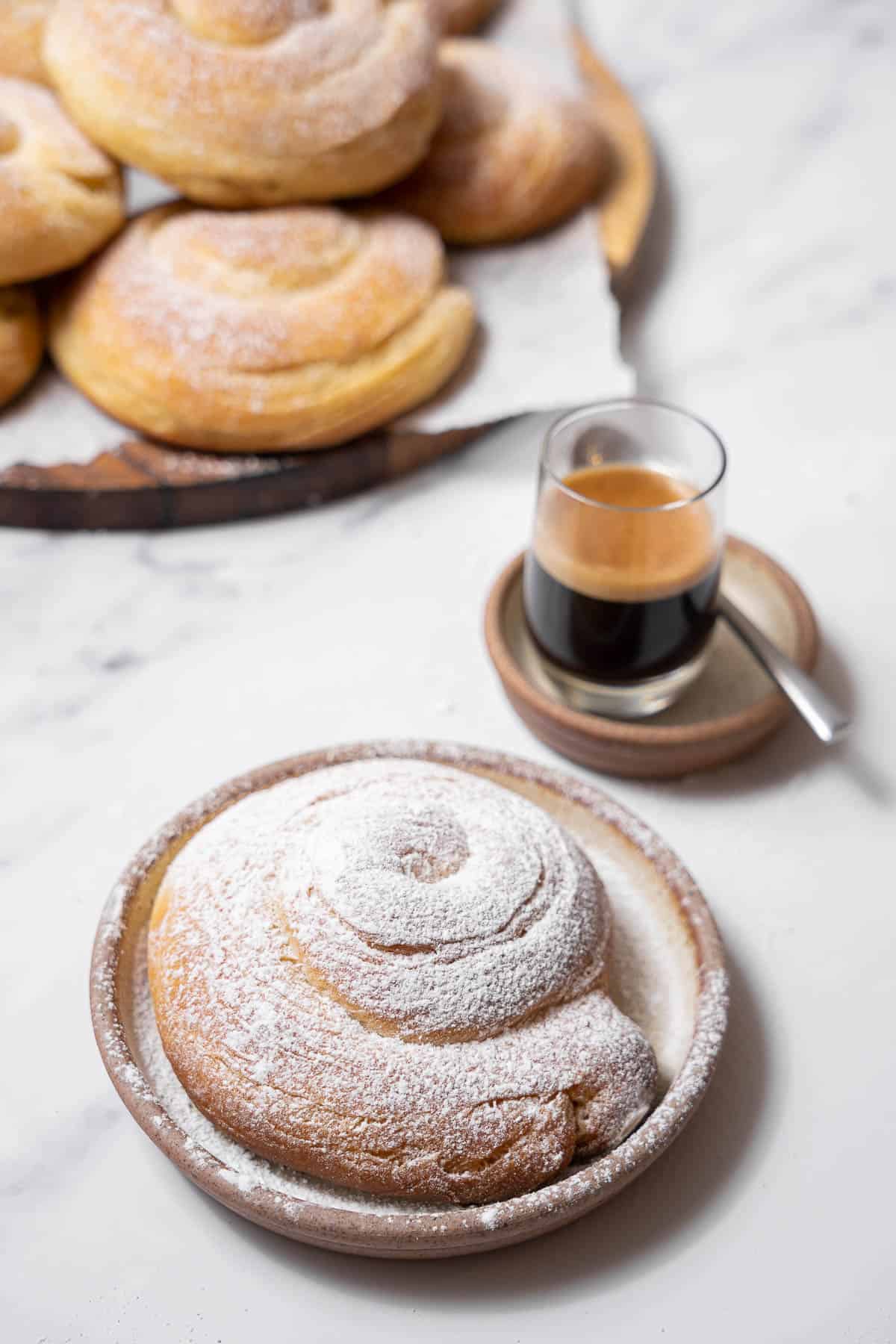
Expert Tips
- Be sure to use bread flour for the right texture and the best rise.
- If you're using instant (fast-action) yeast, you can skip step 1 in the recipe, which is blooming the yeast in warm milk and sugar.
- Letting the dough prove slowly overnight in a cool place, such as the refrigerator, improves the flavor.
If you liked this recipe, please share it with others!
Follow Spanish Sabores on Facebook, Pinterest, and Instagram for more recipes and travel tips.
If you've made and enjoyed this recipe, please leave a 5-star review!
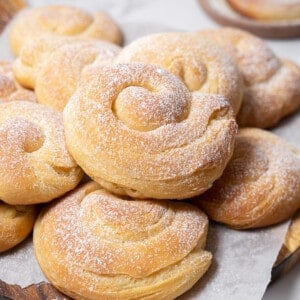
Easy Ensaimada Recipe (Ensaimada Mallorquina)
Ingredients
- 2 teaspoons active dry or instant yeast
- ¾ cup + 2 tablespoons whole milk warmed to 115°F (46°C)
- ½ cup granulated sugar
- 2 large eggs
- 3 ¾ cups bread flour plus extra for dusting
- ¼ teaspoon salt
- ¾ cup + 2 tablespoons salted butter cubed
- powdered sugar for dusting
Instructions
- Warm to the milk to 115°F (46°C) in a saucepan or in the microwave. Add the yeast and one teaspoon of the sugar, whisk until combined, and leave until foamy, about 5-10 minutes. (If you're using instant yeast, you can skip this step.)
- Pour half of the flour into a large bowl and make a well in the center. Slowly add the yeast mixture and stir to form a shaggy dough.
- Cover the bowl with plastic wrap or a damp cloth and leave in a warm spot until the dough has doubled in size, about 1 hour.
- When the dough has doubled, punch down to deflate. Mix the eggs into the dough with a fork or your hands, then mix in the sugar and the remaining flour.
- Knead until the dough is smooth and stretchy, about 5 minutes (it will be sticky - that's ok). Place it in a bowl, cover, and let it prove in a warm place until nearly doubled, about 30-45 minutes.
- Punch down the dough and roll it out on a floured surface into an 18-inch square. Spread the softened butter evenly over the dough.
- Roll the dough up from the bottom of the square, and cut into 1 inch (2.5 cm) slices.
- Roll out each slice of dough into a long rope, then coil each rope into the traditional snail shell shape.
- Place the ensaimadas on two large, parchment-lined cookie sheets and cover with plastic wrap or tea towels. Leave to rise until dough has doubled in size, at least 3-8 hours or overnight.
- Preheat the oven to 350°F (180°C). Bake for 12-15 minutes or until golden brown on top.
- Let the ensaimadas cool for at least 20 minutes, and then dust generously with powdered sugar. Enjoy with coffee, hot chocolate, or ice cream.
Notes
- Be sure to use bread flour for the right texture and the best rise.
- If you're using instant (fast-action) yeast, you can skip step 1 in the recipe, which is blooming the yeast in warm milk and sugar.
- Letting the shaped ensaimadas prove slowly overnight in a cool place, such as the refrigerator, improves the flavor.
Nutrition
Photography by Giulia Verdinelli


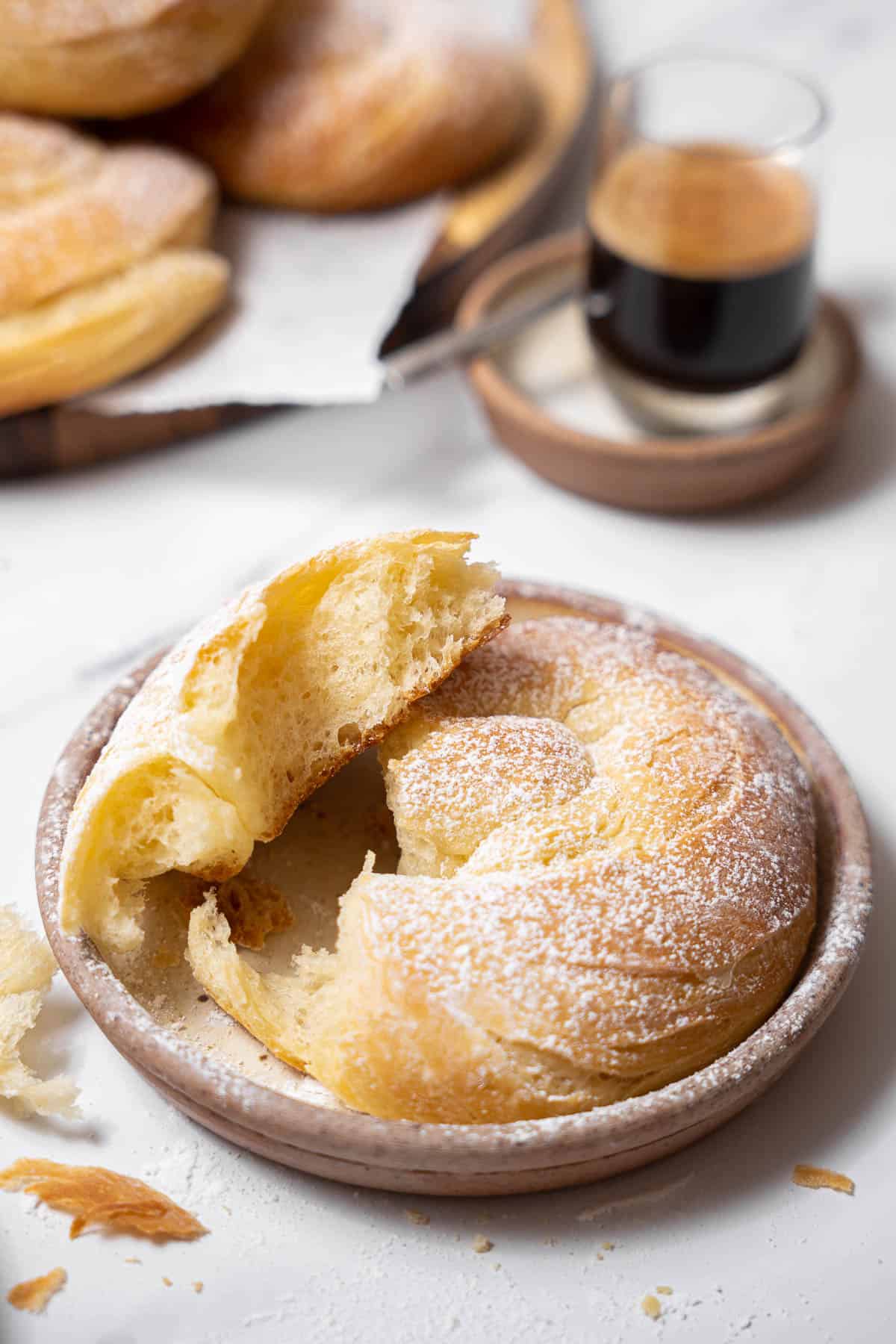
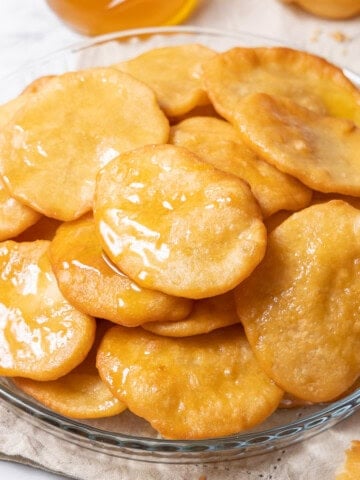
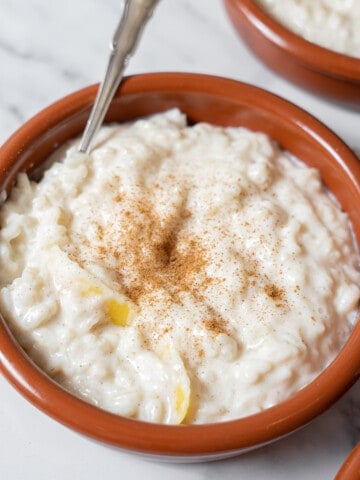
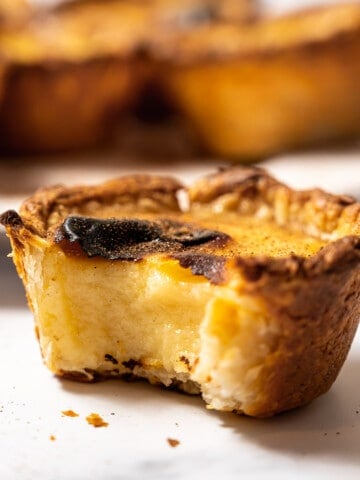
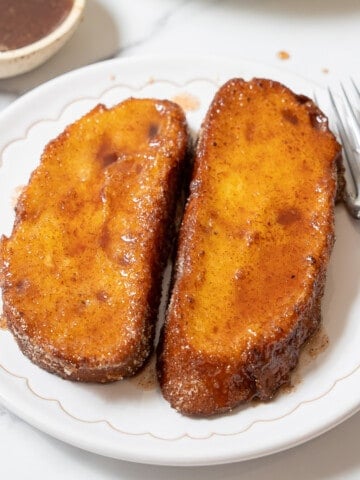
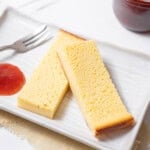

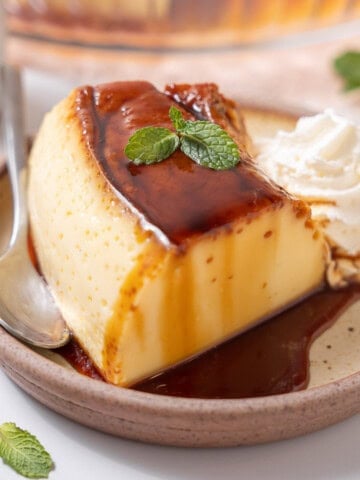
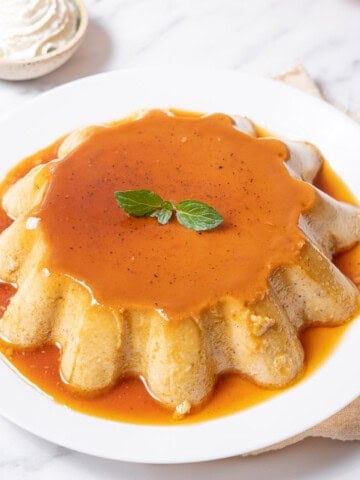
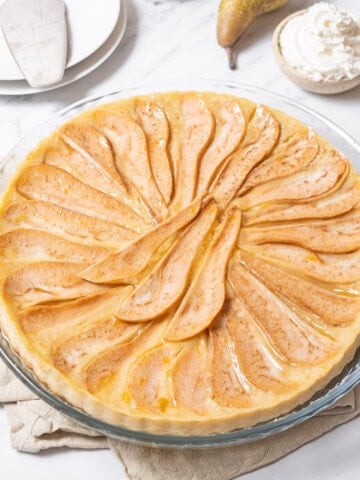
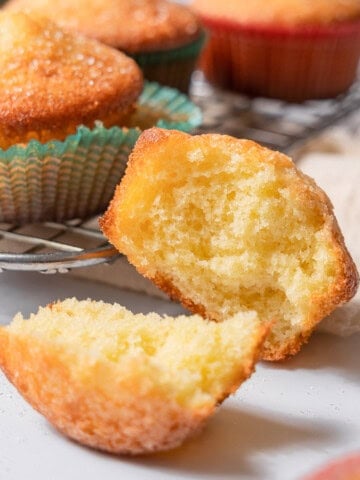
Giulia
These turned out super fluffy and really delicious!
I enjoyed dunking them in my cappuccino in the morning.
Oriel Bayliss
I tried this recipe and did Exactly as it said, A. The dough didn't rise enough, and was too dry, so they were a disaster. What went wrong, ? no idea.
Oriel Bayliss
when I lived in Spain I used buy buy Seis (six) abnd freeze 4. they were still delicious after thawing.
Jeneva Canlas Takasawa
I miss Philippine Ensaimada, a favorite snack in the Philippines. This recipe is a treat!!!
Ensaïmada lover - A Catalan lost in Philippines
Philippine "Ensaymada", have NOTHING in common, taste wise, with the Spanish (Mallorcan/Catalan, since they are all made in Barcelona and shipped to Mallorca every early morning) ensaimada. I wish. I live in the Philippines. Really, nothing. Just the name and the shape. The best ensaimadas from Spain, in my opinion (every one has one opinion) are the ones filled with "cabello de angel" (Angel hair = Spaghetti squash). Yummy. I really want to try the recipe from this website. If I remember, and if I actually attempt to make it, I'll give some feedback in the future. First I need to buy myself an oven (even a portable electric one - for large pizza sizes, should be fine).
Jill Hassall
Would these freeze successfully, if so would you freeze them cooked or uncooked? Thanks
Lauren Aloise
I've never tried it - but could see it being possible in both forms. I'd look for instructions for freezing something like cinnamon rolls to compare.
Jeneva Canlas Takasawa
Responding to Jill: You can freeze the dough but the baked product won’t turn out the same. You can freeze the baked product, too. I haven’t tried freezing pastries just plain bread, e.g., store- bought rolls, sandwich breads.
Jeneva Canlas Takasawa
You can freeze the dough but the baked product won’t turn out the same. You can freeze the baked product, too. I haven’t tried freezing pastries just plain bread, e.g., store- bought rolls, sandwich breads.
Monica
Hi, thanks so much for this. Many years ago when visiting Spain I had a few of these and it was heavenly! If I were to use pork lard, what amount do you recommend? Thank you. Love this blog and the food tour company (I went on one tour)!
Lauren Aloise
The lard ones are good! Just use the same amount as the butter.